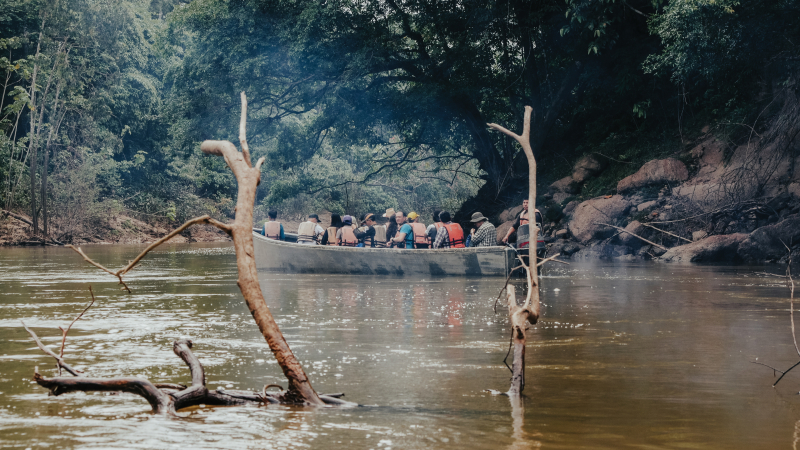Amazon-ing connections at field school
Grad student Adrian Smith learns about ancient forest gardens in Ecuador.

Immersed in a field school in the middle of the Amazon rainforest, Adrian Smith let his mind drift. How, he thought, over the course of many generations had the Indigenous people in Ecuador determined which plants to mix with each other to create medicines and other concoctions important to everyday life?
“We learned Indigenous people would take the root of one plant that grew over here and mix it with the root of another plant that grew a mile away and that is what they would use to make poison darts for hunting,” Smith says. “It would take a biochemist years to put that together.”
This summer, Smith, a recent graduate from the School of Environmental Planning, spent a week at the Yasuni Research Station in Ecuador as part of the International Summer School of Historical Ecology in Amazonia.
The trip of a lifetime not only put a capstone on his undergraduate work; it helped kick-start his graduate studies at UNBC. This semester, he began working towards a Master of Natural Resources and Environmental Studies degree studying ancient forest gardens in Northern British Columbia.
His research, under the co-supervision of UNBC Planning Professor Dr. Darwin Horning and Dr. Chelsey Geralda Armstrong from the Smithsonian Institute and University of British Columbia, involves locating places where Indigenous people conducted various forms of agriculture and the impact it has on biodiversity.
“When we locate the sites of these ancient forest gardens, whether it’s in the Amazon or right here in British Columbia, we see that plants that have useful properties for people are located closer together and in greater abundance,” Smith says.
The gardens themselves were integrated right into the forest.
“In Indigenous culture, people are part of the landscape, they thrive within it,” Smith says.
The field school brought together scholars from all over the world, including many from Central and South America. It included a mixture of classroom lectures from world-renowned experts in ethnobiology and historical-ecology and field excursions into the rainforest on foot and by boat along the Tiputini River.
“The field school was a terrific opportunity to begin to build relationships with future colleagues in my field,” Smith says.
